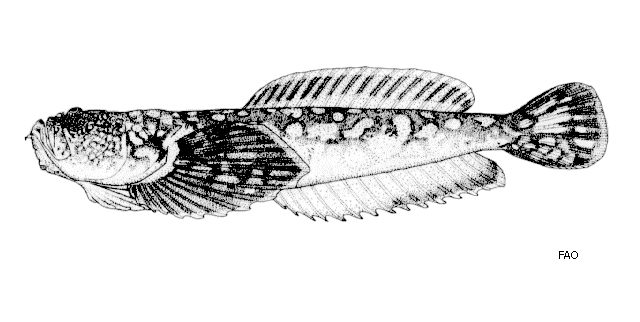| Uranoscopidae (Stargazers) |
| 45 cm TL (male/unsexed) |
|
demersal; marine; depth range 10 - 100 m |
| Southwest Pacific: New Zealand. Eastern Central Pacific: Tonga and Tahiti. |
|
Dorsal spines (total): 0-4; Dorsal soft rays (total): 16-20; Anal soft rays: 15-19. Head and anterior body depressed. Body scales minute, randomly arranged. Pectoral fins with "squarish" appearance, dorsoposterior margin straight, middle ray longest. A mental barbel present on chin. Respiratory valve inside lower jaw with a dermal appendage expanded vertically in young, without appendage in adults. Both lips with labial fimbriae. Lower portion of body without dermal folds originating from anal fin rays (Ref 42788). |
| Ranging from estuaries to the continental shelf (Ref. 42788). Feeds on demersal fishes (Ref. 42788). Minimum depth range from Ref. 121942. |
|
Least Concern (LC); Date assessed: 04 February 2009 Ref. (130435)
|
| harmless |
|
Ranges from the Northeast North Island to Fiordland except Chatham Islands (Ref. 45524). Recorded from bottom trawls off the east coast of South Island (Ref. 58461). Voucher specimen(s) held at the NMNZ. |
Source and more info: www.fishbase.org. For personal, classroom, and other internal use only. Not for publication.

